Abstract
Previous studies recognized a prolonged suppression of egg-albumin (EA)-specific IgE responsiveness in the progeny of immunized female rats, and showed that an identical effect was produced by the administration of small amounts of specific IgG during the first few days of life. Both manipulations also elevated the primary IgG response to a subsequent immunization but with less consistency. We have now investigated the effects on the progeny of varying the type of maternal response by immunizing with antigen given with or without adjuvant. Mothers immunized with EA without adjuvant (by mouth or parenterally) in whom both IgE and IgG responses are thereby suppressed do not influence the antibody-responsiveness of their progeny. By contrast, mothers immunized with EA in adjuvant, a procedure which suppresses IgE but enhances IgG responsiveness to the antigen, transfer both effects to their offspring. In this way, both IgE-suppression and IgG-enhancement are seen to correlate with the transmission of maternal IgG. EA administered either by mouth or parenterally in the period up to 6 weeks after birth, suppresses both IgE and IgG responses to subsequent specific challenges in a dose-dependent manner. The results of feeding antigen to the progeny of (IgG-transmitting) immune mothers indicated that passive and active immunity in the young rat, although both suppressing IgE-responsiveness, do not have additive depressive effects.
Full text
PDF
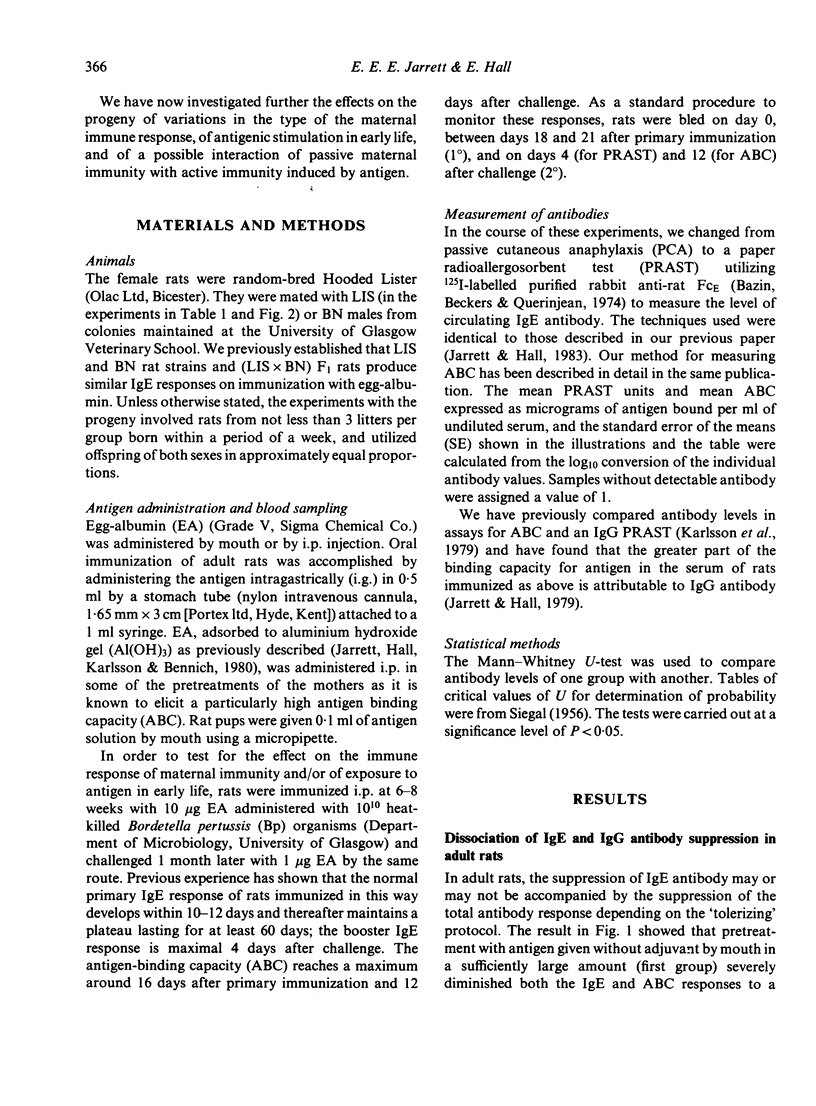
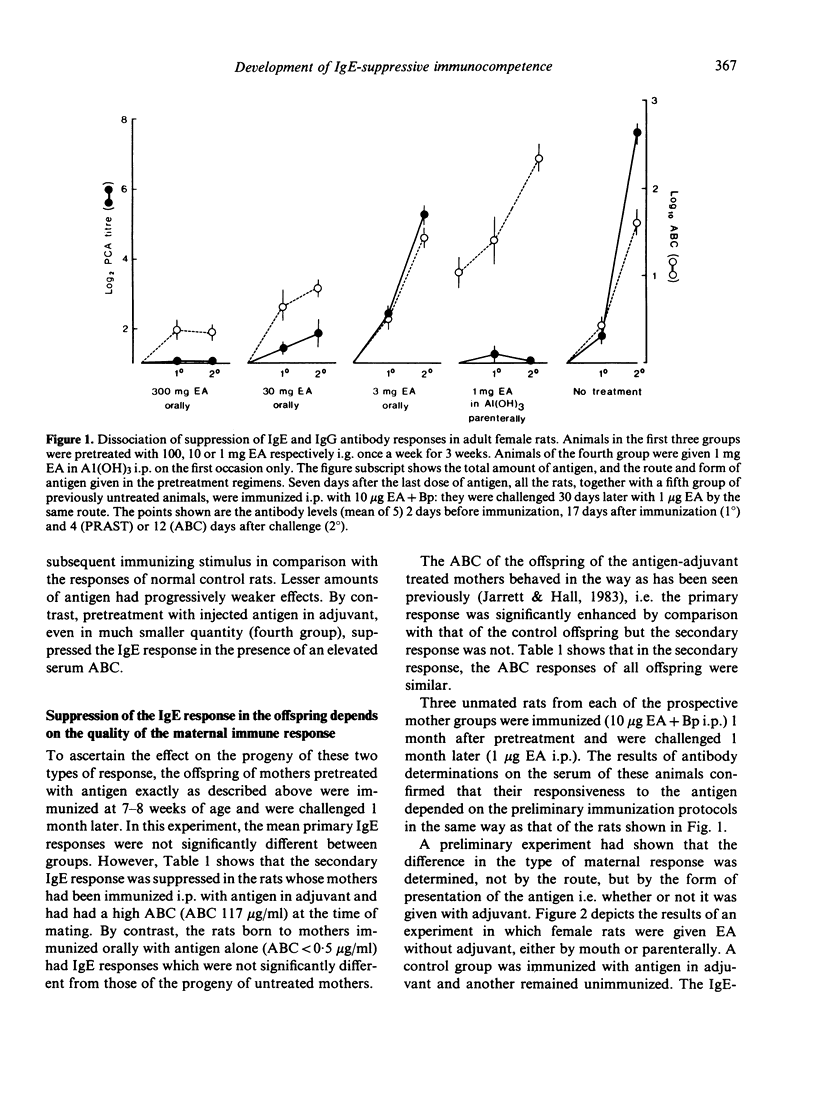
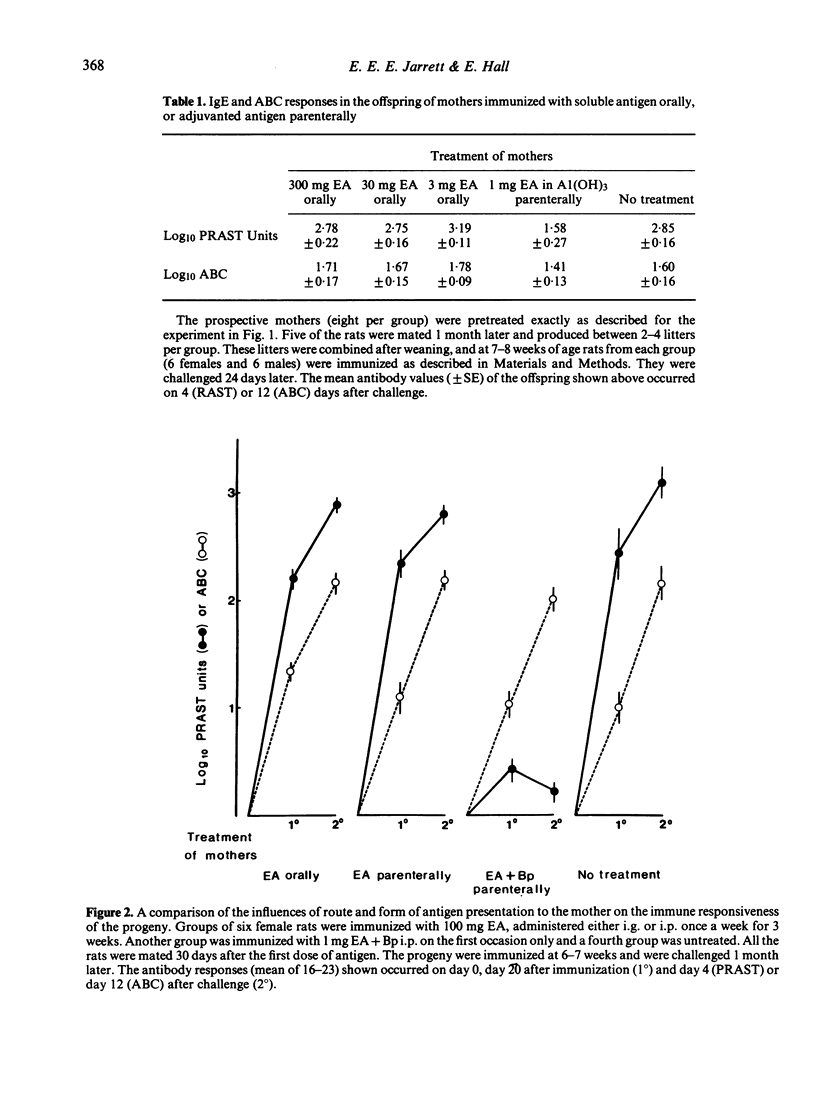


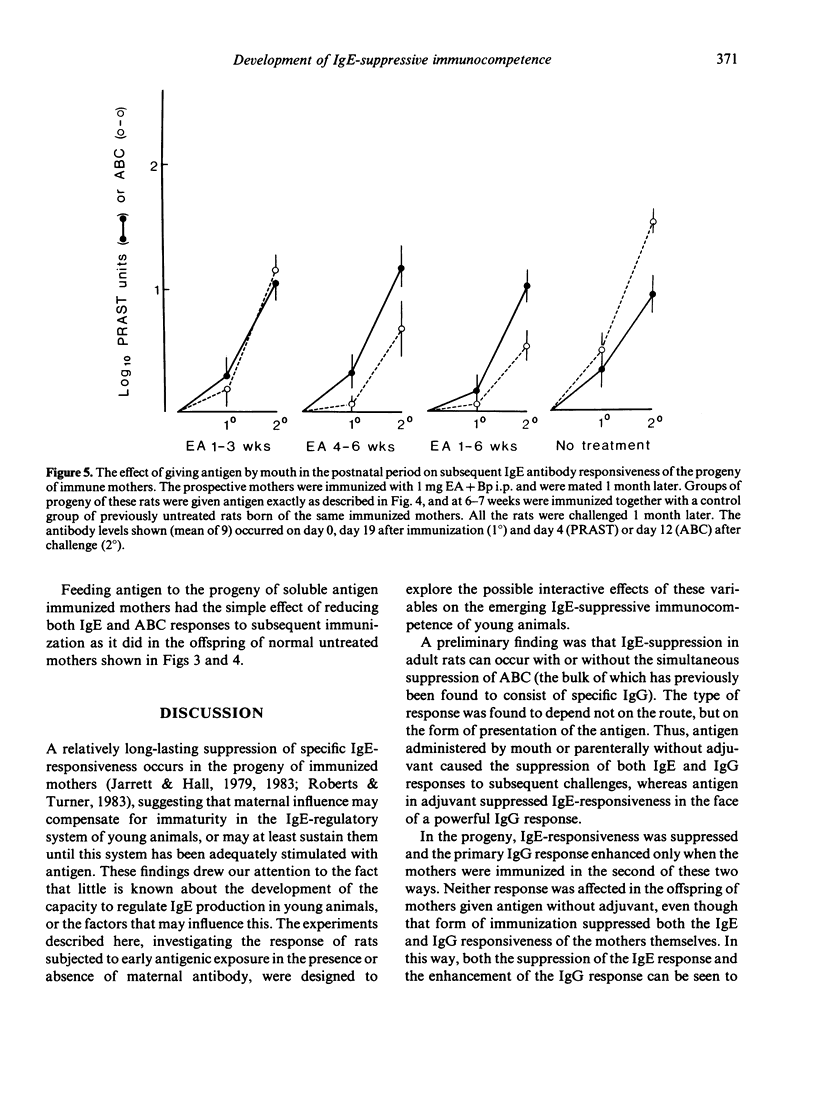

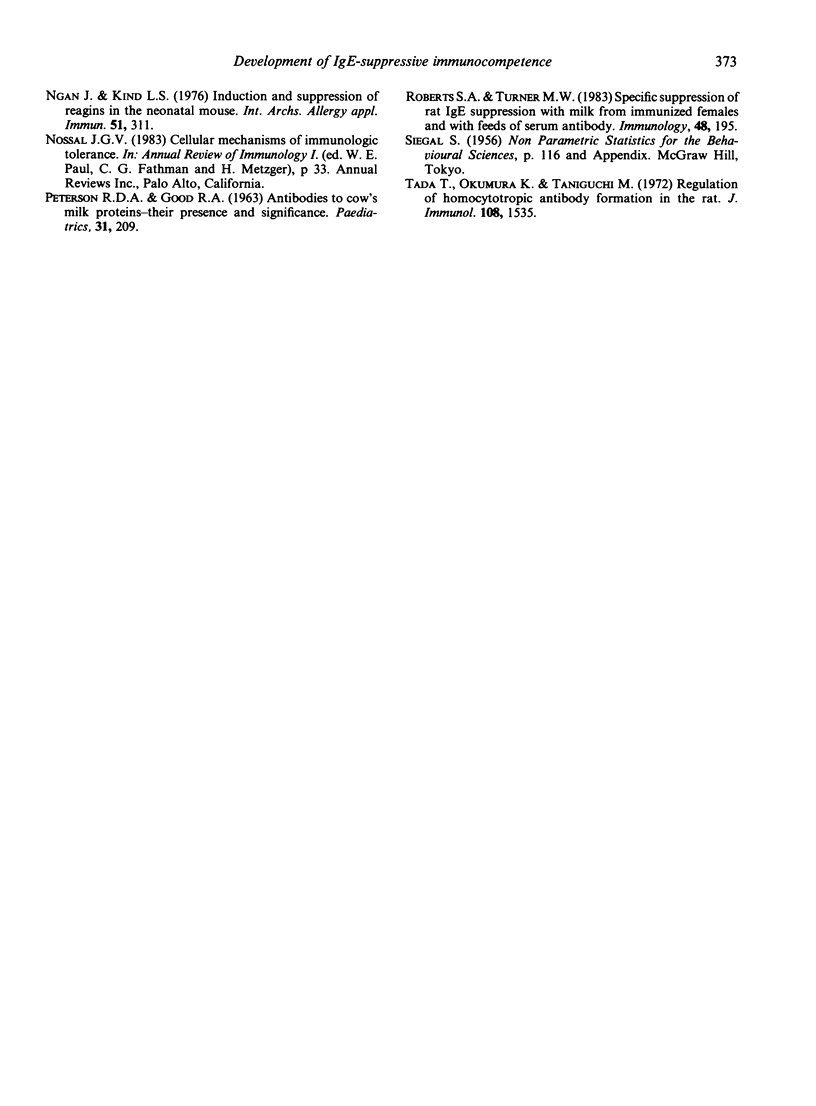
Selected References
These references are in PubMed. This may not be the complete list of references from this article.
- Bazin H., Beckers A., Querinjean P. Three classes and four (sub)classes of rat immunoglobulins: IgM, IgA, IgE and IgG1, IgG2a, IgG2b, IgG2c. Eur J Immunol. 1974 Jan;4(1):44–48. doi: 10.1002/eji.1830040112. [DOI] [PubMed] [Google Scholar]
- Dannaeus A., Johansson S. G., Foucard T. Clinical and immunological aspects of food allergy in childhood. II. Development of allergic symptoms and humoral immune response to foods in infants of atopic mothers during the first 24 months of life. Acta Paediatr Scand. 1978 Jul;67(4):497–504. doi: 10.1111/j.1651-2227.1978.tb16360.x. [DOI] [PubMed] [Google Scholar]
- Hanson D. G. Ontogeny of orally induced tolerance to soluble proteins in mice. I. Priming and tolerance in newborns. J Immunol. 1981 Oct;127(4):1518–1524. [PubMed] [Google Scholar]
- Jarrett E. E. Activation of IgE regulatory mechanisms by transmucosal absorption of antigen. Lancet. 1977 Jul 30;2(8031):223–225. doi: 10.1016/s0140-6736(77)92837-9. [DOI] [PubMed] [Google Scholar]
- Jarrett E. E., Hall E., Karlsson T., Bennich H. Adjuvants in the induction and enhancement of rat IgE responses. Clin Exp Immunol. 1980 Jan;39(1):183–189. [PMC free article] [PubMed] [Google Scholar]
- Jarrett E., Hall E. Selective suppression of IgE antibody responsiveness by maternal influence. Nature. 1979 Jul 12;280(5718):145–147. doi: 10.1038/280145a0. [DOI] [PubMed] [Google Scholar]
- Karlsson T., Ellerson J. R., Haig D. M., Jarrett E. E., Bennich H. A radioimmunoassay for evaluation of the IgE and IgG antibody responses in the rat. Scand J Immunol. 1979 Mar;9(3):229–238. doi: 10.1111/j.1365-3083.1979.tb02726.x. [DOI] [PubMed] [Google Scholar]
- Ngan J., Kind S. L. Induction and suppression of reagins in the neonatal mouse. Int Arch Allergy Appl Immunol. 1976;51(3):311–319. doi: 10.1159/000231605. [DOI] [PubMed] [Google Scholar]
- PETERSON R. D., GOOD R. A. Antibodies to cow's milk proteins. Their presence and significance. Pediatrics. 1963 Feb;31:209–221. [PubMed] [Google Scholar]
- Roberts S. A., Turner M. W. Specific suppression of rat IgE responses with milk from immunized females and with feeds of serum antibody. Immunology. 1983 Jan;48(1):195–199. [PMC free article] [PubMed] [Google Scholar]
- Tada T., Okumura K., Taniguchi M. Regulation of homocytotropic antibody formation in the rat. VII. Carrier functions in the anti-hapten homocytotropic antibody response. J Immunol. 1972 Jun;108(6):1535–1541. [PubMed] [Google Scholar]


